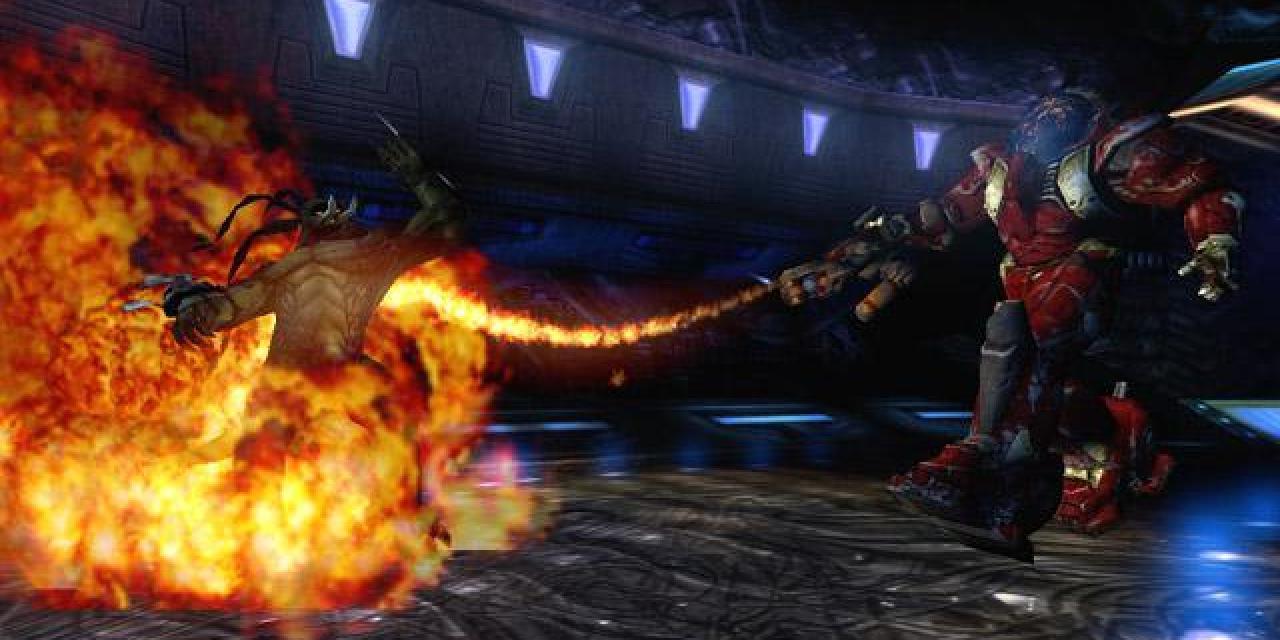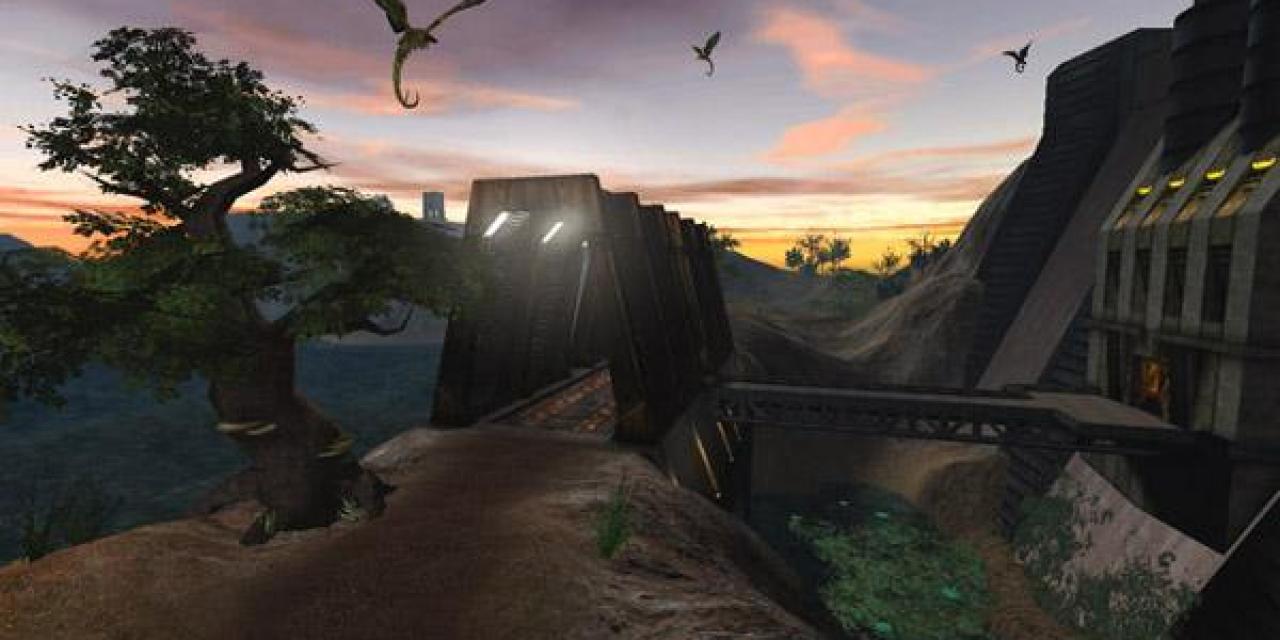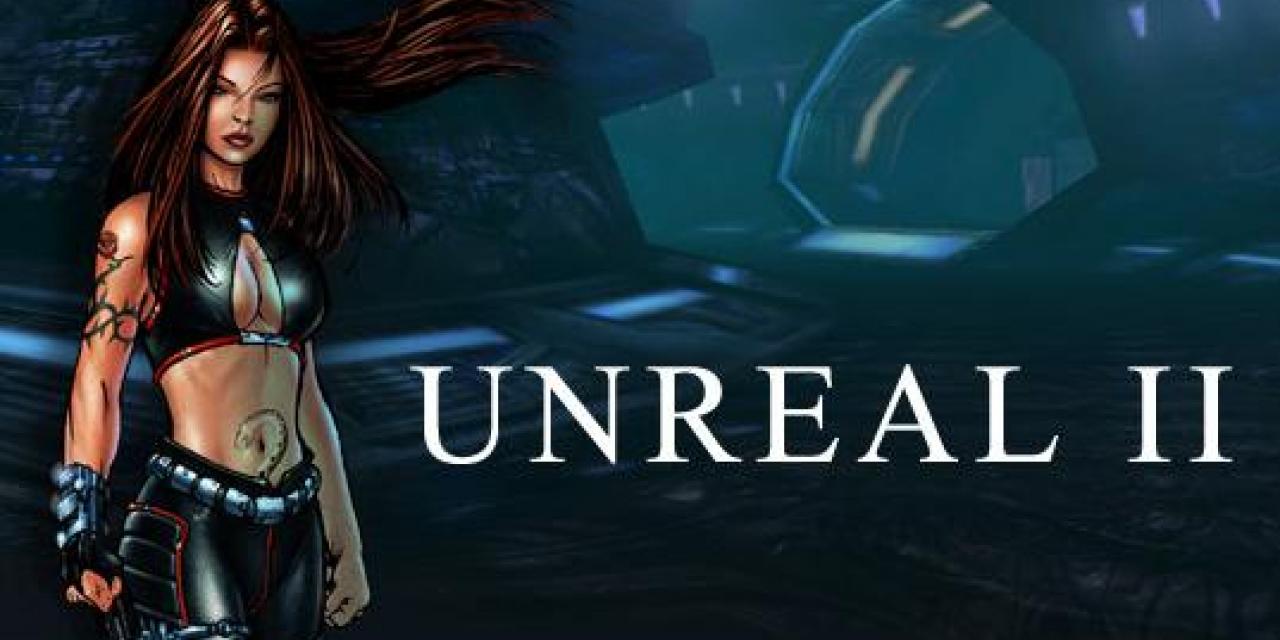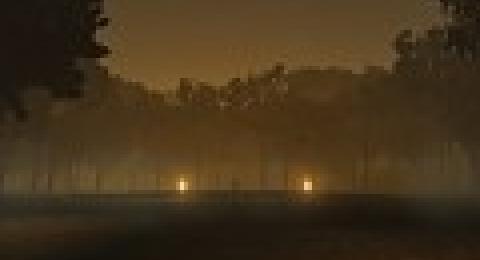



The official Site to Unreal II has been launched and thanks to them more info about the game has surfaced. Release is planned for Q1 2002 but it is almost certain that the "usual" delays will effect this title as well.
Unreal II is the sequel to the original Unreal and takes place in the same fictional universe - but the main player character and the locations are different than those found in the first game.
As the player, you are the lone representative of the Law in a distant sector of space. You patrol your beat in the creaky but serviceable starship Atlantis, a former military escort vessel that was decommissioned and retrofitted for civil government service long ago. You are accompanied by a support crew of three: Ne'Ban is your trusty alien pilot, Isaak is an engineer who keeps the ship running, and Aida acts as your Intelligence officer - she monitors the situation in the sector, keeps you up to date, and briefs you before you leave the Atlantis to go on a planetary mission.
Things are quiet... until the sector erupts in a full-scale interstellar war. Battles rage on and around more than ten vastly different worlds as several alien races, multiple mercenary armies, and the infamous Terran Military engage in fierce combat. You are caught in the middle of the fighting, and must balance your responsibility to protect the colonists, archaeologists, miners, and other civilians in your sector... with the duty to discover the source of the conflict and put an end to the war.
The single player game takes the form of a series of missions linked by the narrative framework of the game's story. Missions may take place in the dense jungle of a tropical planet, in the ancient ruins of an alien city, deep underground in a warren of tunnels, on the molten surface of a hellish volcanic world, in the bowels of an alien industrial facility, in the endless oceans of a water-bound world, or on board an enemy starship. There are more than ten unique settings, each with its own distinct look and production design.
The story unfolds through briefings, cut scenes, in-game dialog, and the action contained in the missions themselves. Story telling does not get in the way of the action - the game is designed so that the missions are fast paced and intense; there are natural pauses as the player returns to the Atlantis between combat missions.
The Unreal II single player game is mission based - each combat mission features a different type of tactical situation, including assault with a squad of friendly troops, base defense, hostage rescue, civilian escort, stealth infiltration, and the traditional FPS search and destroy sorties. Opponents include a bestiary of strange alien creatures as well as human and humanoid soldiers and mercenaries.
Between missions the player will return to the orbiting Atlantis to find out about the next mission, research items picked up during the previous mission (such as new weapons), interact with fellow crew members, catch up on the story, and re-arm for the next sortie.
In addition to the story-driven missions, players will be able to ascend through three single player tournament ladders consisting of multiplayer levels populated with bots. All of these levels are also available for multiplayer action on the Internet or over a LAN. In the new expanded multiplayer game, player teams will fight for control of planet surfaces and alien artifacts using nanotechnology replicators to build ever more sophisticated weapons such as automated gun turrets, force fields, sensors, recon and repair robots, and more. Players will choose one of three player classes at the beginning of play - class selection establishes a balance of speed, special abilities, armor, and firepower. All races, abilities, weapons, equipment, and tactics will have precedents in the single player game - but the expanded multiplayer experience brings everything together at the same time.
Key new technology features include a tenfold boost in character poly counts and a hundredfold increase for environments, realistic outdoor scenery generated by a new large scale terrain system, procedural character animations and blending using a new skeletal animation system with component level controllers, and a particle system that allows the Unreal II project team to realistically model fire, smoke, cloth, hair, weather effects, and breaking glass.
Other technical improvements include upgraded NPC AI, a real-time dialog system for communicating with NPCs, texture compression, alpha blending, distance fog, a new version of the Unreal level editor, advanced particle physics with forces and particle collisions, and per-poly collision detection for characters.







